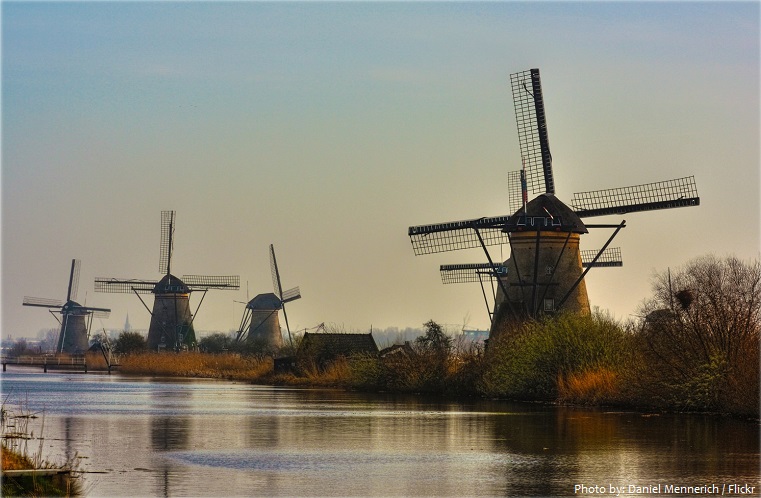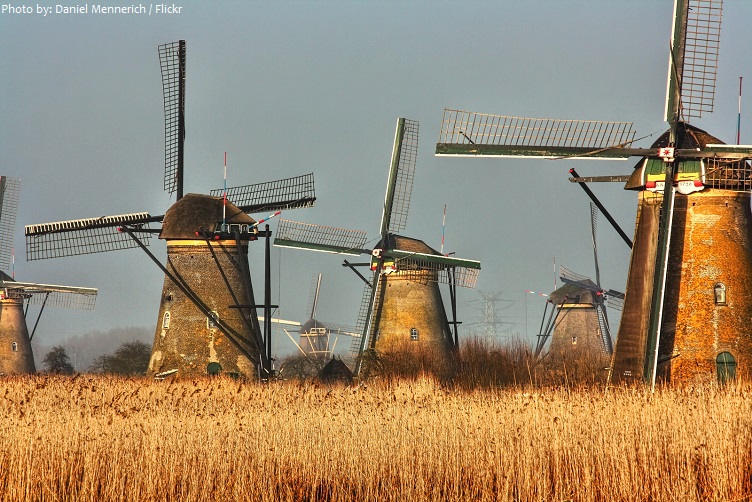The windmills at Kinderdijk are a group of 19 monumental windmills in the Alblasserwaard polder, in the province of South Holland, Netherlands.
Most of the mills are part of the village of Kinderdijk.
Kinderdijk lies in the Alblasserwaard, at the confluence of the Lek and Noord rivers. It is located about 15 km (9 miles) east of Rotterdam.
The outstanding contribution made by the people of the Netherlands to the technology of handling water is admirably demonstrated by the installations in the Kinderdijk area.
Built in 1738 and 1740, to keep water out of the polder, it is the largest concentration of old windmills in the Netherlands and one of the best-known Dutch tourist sites.
The windmills were erected to drain the Alblasserwaard polders, which had suffered floods since the 13th century. One such flood, the Saint Elizabeth Flood of 1421, is both the source of the name Kinderdijk and of the associated fairy tale, “The Cat and the Cradle”: after the storm, a wooden cradle was spotted on the flood waters, in which a cat jumped to and fro to keep the cradle afloat.
When the cradle approached the dry land of the dyke, the locals discovered a baby inside — hence the name Kinderdijk, Dutch for “children’s dyke. “
The site illustrates all the typical features associated with this technology – dykes, reservoirs, pumping stations, administrative buildings and a series of beautifully preserved windmills.
Although some of the windmills are still used, the main water works are provided by two diesel pumping stations near one of the entrances of the windmills site.
Like much of the rest of the country, Kinderdijk lies below sea level. If we would let nature run its course here, some 40% of the Netherlands would be flooded, and 60% would be under threat from the waters!
The windmills of Kinderdijk are one of the best known Dutch tourist sites.
The mills are listed as national monuments and the entire area is a protected village view since 1993.
They have been a UNESCO World Heritage site since 1997.
The mills are property of the Kinderdijk World Heritage Foundation.


